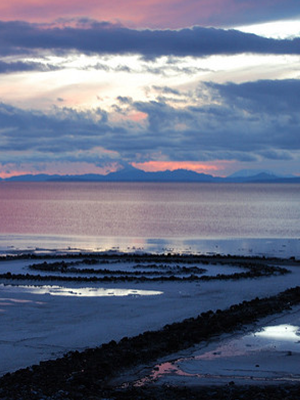
How do artists engage in their environments? In the upcoming “It’s in the Bag” lunchtime lecture, Oregon State University – Cascades English professor Neil Browne will examine the work and influence of Robert Smithson, a 20th century pioneer of land art who used photography extensively.
The lecture, titled “Art and the Local Condition: Robert Smithson, William Carlos Williams, and Allen Ginsberg” will take place on April 4 from 1 p.m. to 1:50 p.m. in the Dining/Academic building, Room 207 on the OSU-Cascades campus on Chandler Avenue in Bend. The lecture is free and open to community members.
Browne will discuss how Smithson engaged his own local – and not always visually appealing -- environment, as well as the work of his fellow New Jersey natives, the poets William Carlos Williams and Allen Ginsberg.
Browne teaches American literature and culture, and studies the intersections of art, culture and ecology. His writings have explored natural landscapes and their influences on American writers and artists.
He is the author of “The World in Which We Occur: John Dewey, Pragmatist Ecology, and American Ecological Writing in the Twentieth Century.” The book was a finalist for the 2009 Oregon Book Awards.
Browne received a master’s and Ph.D. from Ohio University, and a Bachelor of Arts from the University of Central Florida.
OSU-Cascades’ lunchtime lectures showcase research and scholarship underway by faculty at the Bend campus. The lectures are free, but advance registration is requested at http://www.osucascades.edu/lunchtime-lectures.
Attendees are invited to dine or pick up a to-go lunch in the Beaver Dam prior to the lecture.
For information contact 541-322-3100 or info@osucascades.edu.
About OSU-Cascades: Oregon State University’s campus in Bend, Ore., opened in 2016 and features outstanding faculty in degree programs that reflect Central Oregon’s vibrant economy and abundant natural resources. Nearly 20 undergraduate majors, 30 minors and options, and three graduate programs include computer science, energy systems engineering, kinesiology, hospitality management, and tourism, recreation and adventure leadership.